
Loire River Valley
Chinon
Chinon is on a rocky outcropping overlooking a shallows on the Vienne river, on the borders of Touraine, Anjou, and Poitou. A fortress has been here at least since the Gauls. Saint Martin of Tours described the city and its surroundings before his death in 400. One of Martin's disciples, Mexme or Maxime, founded a convent here and was the first abbot of the monks.
The Norsemen showed up in 845 and sacked Chinon.
Thibaut the Trickster, Count of Blois and Chartres, restored the fortress in 950.
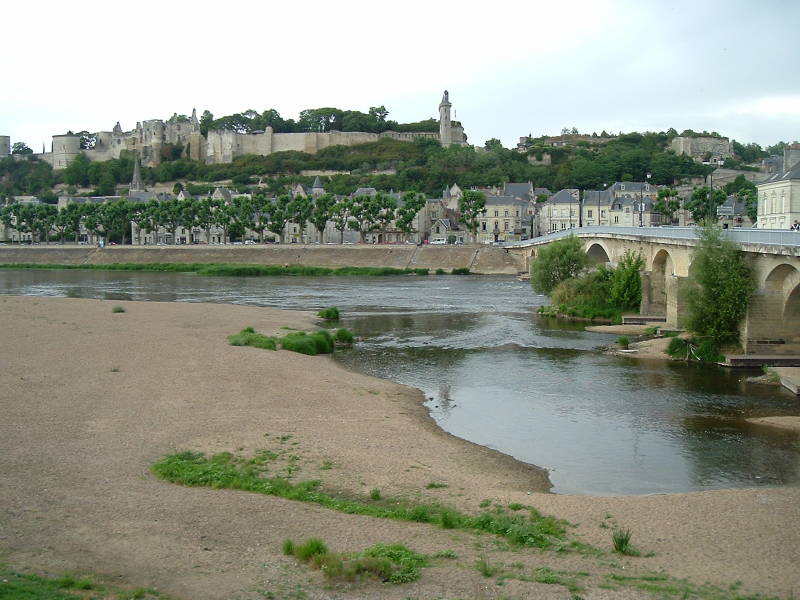

The fortress was one of the favorite residences of Henry II. He set up his royal court here and brought prosperity to the city.
The region of Touraine, including Chinon, was given in the 1410s to the dauphin, the heir apparent to the French crown. This was the middle of the Hundred Years War (1337 to 1453). The dauphin, the future Charles VII, then 14 years old, fled Paris for Chinon.
The Battle of Agincourt on Saint Crispen's Day, 25 October 1415, was a major victory for the English under Henry V.
Henry V died young, at 36, and suddenly, from dysentery. It was August 1422, and his son Henry VI was just nine months old. Charles VI of France died two months later, making the now eleven-month-old Henry VI of England nominally the King of England and King of France. The nobility of England swore loyalty to Henry VI and set up a regency council to govern until Henry came of age. Fifteen years of Adult Supervision with the nobility fighting each other for influence.
Things were ill-defined and chaotic.
The followers of Henry VI claimed the throne of France for him. They saw Charles VII as merely the "King of Bourges", much as Hamid Karzai was President of Afghanistan from 2004 to 2014 but was often dismissed as little more than "Mayor of Kabul". Charles set up his small court in the fortress in Chinon in 1427.
Amazon
ASIN: B000S6GIK2
Joan of Arc
Jeanne d'Arc, called Joan of Arc in English, said that she had received visions since the age of 13 in which the Archangel Michael, Saint Margaret, and Saint Catherine of Alexandria told her to support Charles VII and free France from English domination.
She made a prediction about French defeat in a battle. When news arrived confirming her prediction, a garrison commander believed that she must have known through divine revelation. Of course the pattern of events so far in the Hundred Years War made another French defeat the obvious bet. He granted her military escort to take her through hostile Burgundian territory to Chinon to visit the Dauphin.
She greatly impressed Charles in their meeting. The legend is that Charles stood behind others as they presented an imposter as the Dauphin. But then Jeanne went directly to Charles and addressed him as the King of France.
Most everything else had failed for French forces over the past century, so why not put Jeanne at the head of the army marching on Orléans?
Jeanne's involvement effectively changed the Hundred Years War into a religious war. Charles' advisors were worried about this development. If Jeanne was not recognized as absolutely orthodox (in the Roman Catholic sense, not the actually Orthodox Christian sense), then Charles' opponents could claim that his crown was a gift from Satan.
Charles called for a thorough background check and theological examination. Jeanne had met him in Chinon on March 7th. In April the commission of inquiry "declared her to be of irreproachable life, a good Christian, possessed of the virtues of humility, honesty and simplicity." They didn't go so far as to vouch for the divine revelation or inspiration, hedging their bet with a "favorable presumption" that she was on a mission from God.
They recommended putting her prediction to the test by having her lead the march to break the siege of Orléans. Charles set her up with weapons, armor, a horse, and a banner.
Jeanne dictated a scathing letter to the English, referring to Henry VI as the "so-called" king and similarly disrespecting the English commanders. She described the English presence in France as an illegitimate occupation, and said that the English "should go away to their own country, in God's name", if they wanted to avoid death and destruction. Oh, and pay for all damages they had caused.
Historians debate the extent of her actual military involvement. Even if she did wield a sword during a significant part of the battle, her role was primarily motivational. Whatever she did, the army did have a series of successes leading to the first major French victories of the Hundred Years War.
Jeanne led the army around the southeast and east of Paris to Reims, where French kings were traditionally crowned. Reims opened its gate to Jeanne's army on 16 July 1429, and Charles VII was crowned King of France the following morning.
RouenJeanne d'Arc was captured by English forces at Compiègne in May 1430. They took her to Rouen and put her on trial around Christmas of 1430. After a long church trial, she was burned at the stake in the Rouen market square on 30 May 1431.
Charles VII recaptured Rouen in 1449, ending 30 years of English occupation. The Hundred Years War finally ended four years later, in 1453. This freed up the English to immediately start their domestic Wars of the Roses, an on-and-off series of civil wars between the Lancaster and York branches of the royal House of Plantagenet over the years 1455 through 1587.
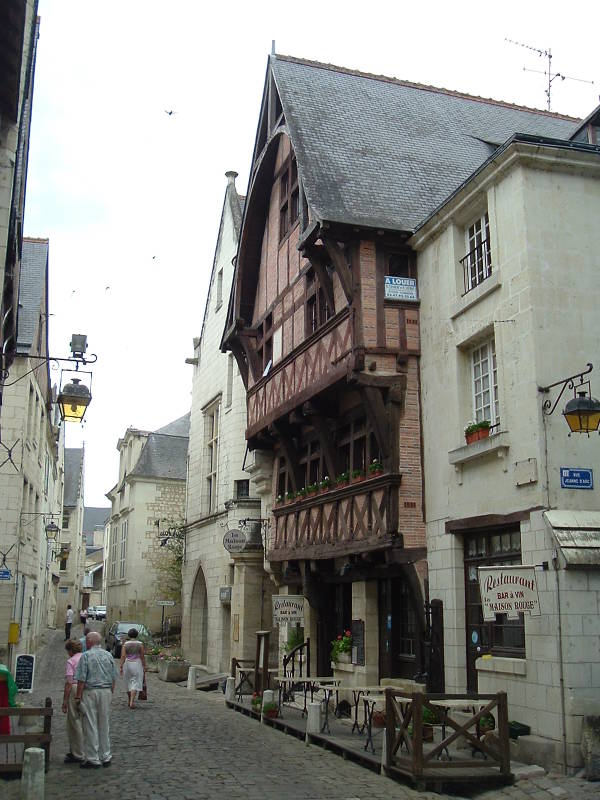
A half-timbered house along a narrow street in Chinon, with rue Jeanne d'Arc leading off to the right.
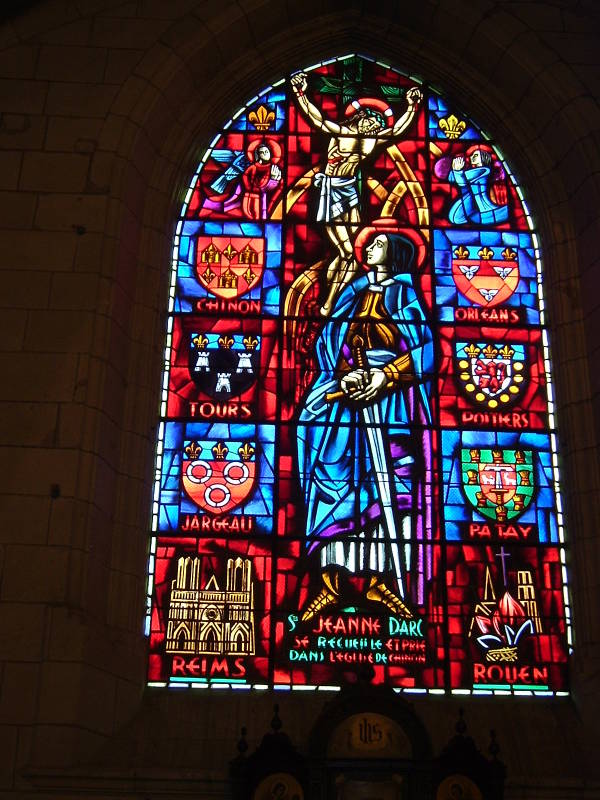
Stained glass window in Chinon depicting Jeanne d'Arc.
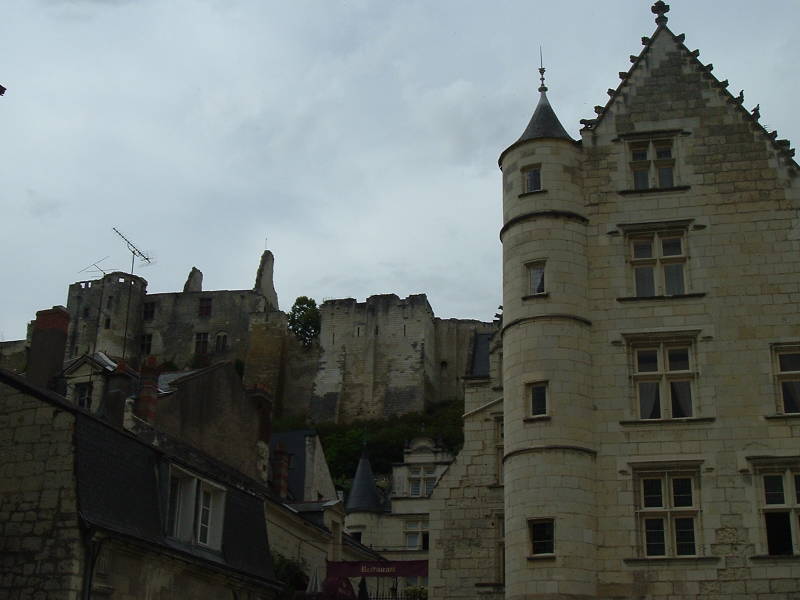
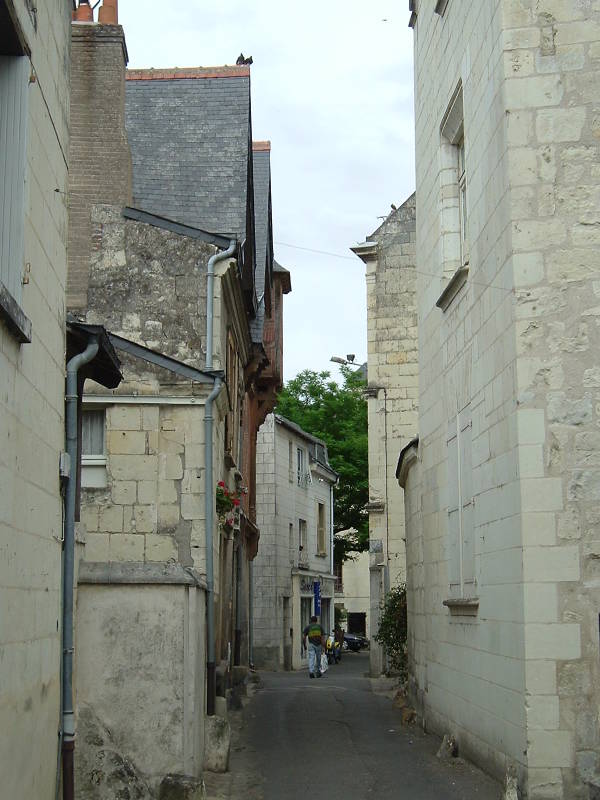
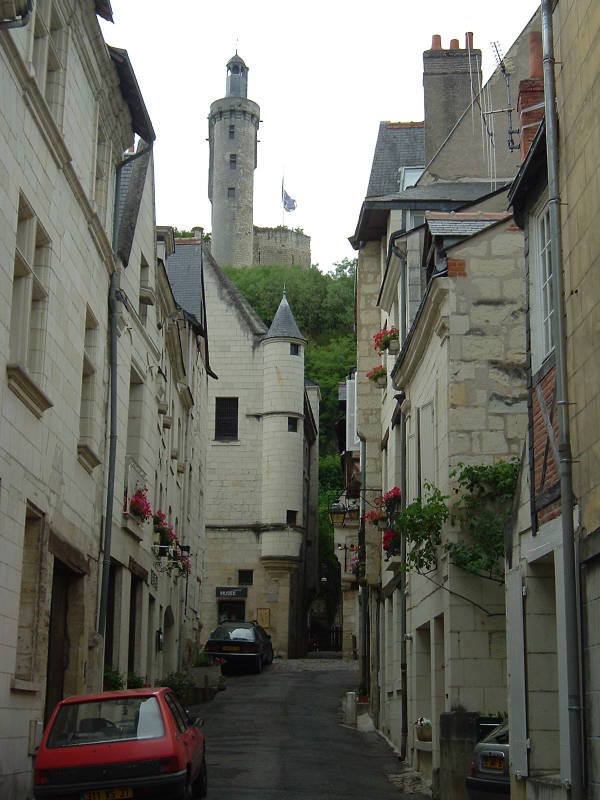
Chinon in World War II
Jumping to the 20th century and World War II, constant convoys of refugees arrived in Chinon in June 1940 until German forces arrived on the morning of 21 June 1940. The city council had persuaded the French military not to set up a defensive line and blow up bridges in Chinon, leaving the town largely undamaged. The Nazis established administrative offices and barracks in Chinon.
The Germans deported 35 people from Chinon to the death camps. A few local people were able to hide young Jewish citizens.
The French Resistance organized a cell within the perimeter of L'Île—Bouchard—Saumur—Richelieu, concentrated in the Scévolles forest. Twenty-five citizens of Chinon joined the Resistance, five of whom were killed.
NormandyLandings French
Resistance
After the Allied landings in Normandy, a Free French aviation officer parachuted in to take command of the Resistance operations in the area.
The Allies liberated Paris on 25 August 1944. American forces arrived in the Chinon area two days later. Most Germans in the Nazi headquarters in Chinon fled. A few remained. The Allies ordered them to leave on the 28th, and liberated Chinon on the 30th.
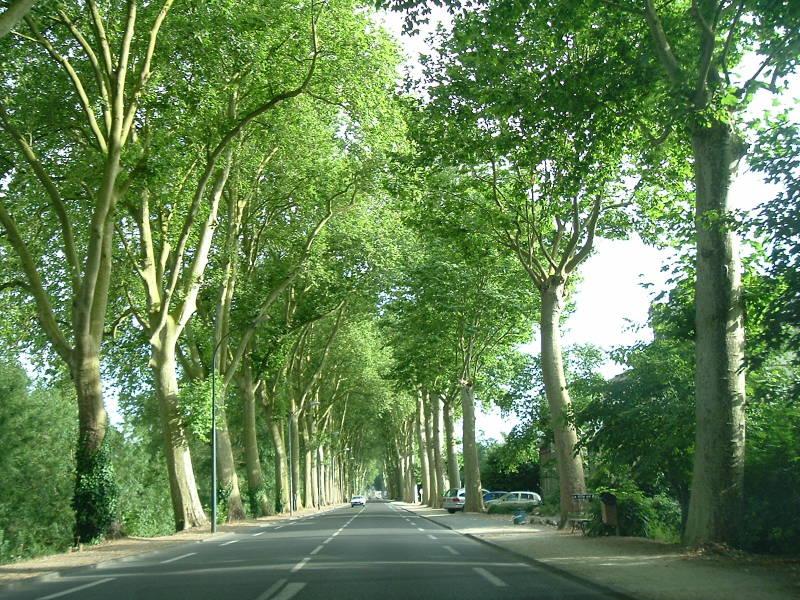
Plane trees line the road from Chinon back through Montsoreau to Saumur.
Now, on to Château de Chenonceau.
Next ❯
Château de Chenonceau

